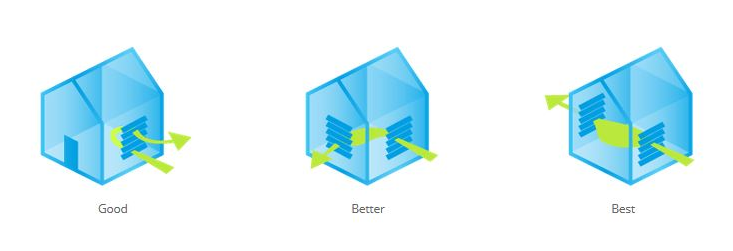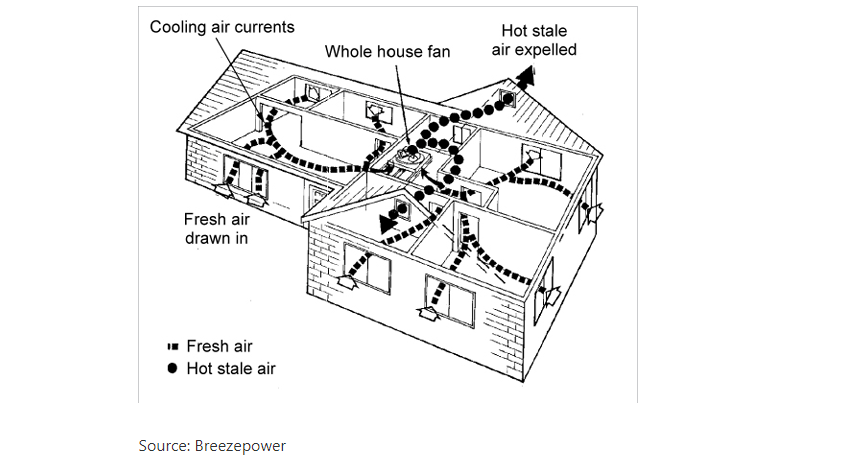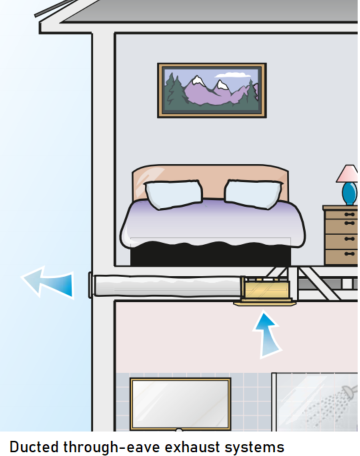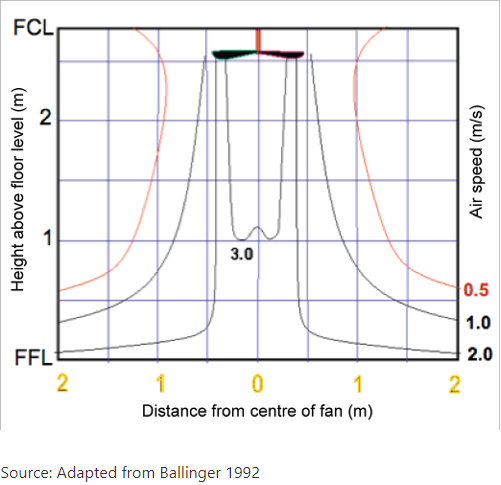Adequate Ventilation

Proper ventilation is an important concern in home design. Without proper ventilation, an insulated and airtight house will seal-in not only harmful pollutants, but also moisture which could damage the house’s structure.
Gases from combustion appliances such as stoves can accumulate in a poorly ventilated houses. Excessive moisture in the home despite hazardous your health can also cause mould growth insulation degradation and structural damage.
Natural ventilation
Passive ventilation use openings (windows, doors, cracks) which naturally draw air through the house and proper design will significantly drop energy usage.
Ventilation is about air exchange. It is important to orient the building so that it is exposed to prevailing breezes during the hottest parts of the year.
A well-designed landscaping plan, outbuildings or fences will also help to channel breezes through the home. If windows are closed for security or noise reasons, installing fixed wall vents could ensure adequate ventilation.

Exhaust Fans

Exhaust fans control air movement by quickly removing pollutants and moisture commonly set in the kitchen bathroom and laundry.
Depending on the bathroom location, if it has external walls then a wall or window-mounted fan can be used to exhaust air directly to the outside. If the room is below a roof that is exposed to the atmosphere, then a roof-mounted fan can be used to exhaust air directly to the outside. Otherwise, it will be necessary to exhaust air directly to outside.
Ceiling-Fans
Although natural ventilation can be influenced by the factors mentioned previously, you may not be able to design adequate cross flow ventilation to lower your cooling loads. Sometimes, in order to improve air movement, installing mechanical ventilation is necessary.
At 50% relative humidity, air movement of 0.5m/ s (barely enough to move a sheet of paper) creates cooling effect equivalent to a 3°C drop in temperature, while prolonged air speeds above 1.0m/ s create discomfort.

NatHERS will strongly consider crossflow ventilation, exhausts and ceiling fans in thermal performance calculations and adding them can avoid the use of lower SHGC glazings or excessive window shading. Something to consider when designing your passive home. A well ventilated home not only helps to improve thermal performance but also creates a healthy environment for living occupants.